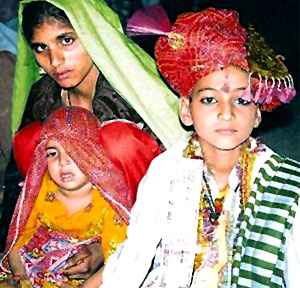 Education in Medieval India was influenced mostly by foreign invasions. Various traders and rulers came to India during the medieval period and brought their own culture and tradition as well as learning process. Indian society imbibed those knowledge and introduced it among the people of the country. However, these foreign conquests resulted in the decline in women`s status in the medieval period. The female literacy rate in India was lower than the male literacy rate. Women Education in Medieval India suffered a lot.
Education in Medieval India was influenced mostly by foreign invasions. Various traders and rulers came to India during the medieval period and brought their own culture and tradition as well as learning process. Indian society imbibed those knowledge and introduced it among the people of the country. However, these foreign conquests resulted in the decline in women`s status in the medieval period. The female literacy rate in India was lower than the male literacy rate. Women Education in Medieval India suffered a lot.
Women were described in ancient Indian texts as weaker sections of the society. They were considered as frail physically and both socially. Thus, though women were given equal rights in the Vedic period, their situation deteriorated with time. The medieval societies were subjected to inequalities and they were oppressed too. Historically, the medieval period is attributed as the `dark age` for women in India. In the medieval India, women were introduced to `Purdah`, (a veil) system. Moreover, several evils started in the society. Social evil practices such as Child Marriage, Sati, Jauhar were restriction on Women Education in Medieval India.
Nevertheless, the status of women in Southern India was far better than the North India. Women Education in Medieval India was seen in the south India. Several thinkers emerged at that time such as: Priyaketaladevi, queen of Chalukya Vikramaditya and Jakkiabbe. Furthermore, the evil practices of the societies existed only among the Hindu community. Other religions such as Hinduism and Buddhism gave freedom to women. They were given the freedom of education and were offered a more liberal approach. The plight of Indian women during the middle Ages was very intense.
The coming of the Muslims aggravated the troubles of the women in India in the medieval period. The women were forced to practice `zenana`. In addition to that Muslim women were prevents them from getting equal access to education. Women Education in Medieval India was restricted among the Muslim women due to religion. Muslim women were illiterate; however, certain sections of the women were better off and were given higher levels of education.
During the Muslim rule, Women Education in Medieval India was constrained because Muslim men were also subjected to low educational attainment in general. On the other hand many women excelled in arts, literature, music in the medieval period. Women also served as rulers in the medieval period. Razia Sultan was the only women monarch to rule the throne of Delhi in the middle ages. The Gond queen Durgavati ruled for fifteen years, before she lost the battle to Mughal emperor Akbar`s general Asaf Ali.








